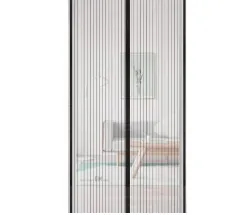Mar . 06, 2025 14:19 Back to list
Identifying Common Problems with Fly Screens and How to Resolve Them
Fly screens are essential for keeping your home free from insects while maintaining proper ventilation. However, issues such as tears, misalignment, and other damage can reduce their effectiveness. If you're looking for fly screen mesh for sale, adhesive fly screen, anti-insect screen, or anti-mosquito screen, it’s important to know how to troubleshoot and resolve common problems that might arise with these products. In this article, we will explore the typical issues people face with fly screens and how to fix them.

Tears and Holes in Fly Screen Mesh for Sale
One of the most common problems with fly screens is the development of tears or holes in the mesh. Whether from accidental contact or wear and tear over time, these damages can significantly reduce the screen's ability to keep out insects. Here's how to fix it:
- Small Tears: If you notice a small tear in your fly screen mesh for sale, you can easily repair it with a patch kit. These kits are widely available and often come with adhesive and mesh patches. For a simple fix, apply the patch over the tear, making sure it’s secure.
- Larger Holes: For larger holes or damage, you may need to replace the damaged section of the mesh or the entire screen. If you’ve purchased fly screen mesh for sale, check to see if you can simply re-screen the frame or buy a replacement mesh to fit your existing frame.
Regular inspections of your fly screen mesh for sale will help catch tears early and prevent them from becoming larger problems.
Misalignment Issues with Adhesive Fly Screen
Adhesive fly screen products are convenient because they don’t require the use of nails or staples to attach to the frame. However, if not applied correctly, the adhesive may cause misalignment, leading to gaps or poorly sealed areas. Here’s how to address misalignment problems:
- Uneven Installation: When installing an adhesive fly screen, ensure that the screen is placed evenly on the window frame before securing it. If it's already misaligned, carefully peel it back from the frame and realign it before pressing it down again. Take your time to avoid applying the adhesive prematurely.
- Gaps in the Sealing: Misalignment often results in small gaps along the edges where insects can sneak through. If you notice gaps, gently lift the screen off the frame, clean both surfaces, and reinstall it with even pressure to ensure a tight seal.
By following proper installation techniques and ensuring your adhesive fly screen is aligned correctly, you can improve its performance and lifespan.
Damage from Anti-Insect Screen Exposure
The anti-insect screen is designed to protect against various pests, but exposure to harsh weather conditions or physical damage can affect its performance. Whether you live in a sunny, windy, or rainy climate, external factors may cause deterioration. Here’s how to address common issues related to weathering and exposure:
- UV Damage: Over time, UV rays from the sun can weaken the material of your anti-insect screen, making it brittle and prone to breakage. To prevent UV damage, consider using a screen with UV-resistant coatings, or apply a protective spray designed for outdoor mesh materials.
- Wind Damage: High winds may cause your anti-insect screento shift or tear. Installing your screen securely, especially in windy areas, will prevent it from being blown out of alignment or damaged. Ensure that the edges are tightly secured to the frame, and use additional clips or fasteners if necessary.
Regular maintenance and careful attention to weather conditions can keep your anti-insect screen in top shape for longer.
Anti-Mosquito Screen Blockage
An anti-mosquito screen is specifically designed to keep mosquitoes at bay, but over time, dirt and debris can accumulate on the screen, reducing its effectiveness. Regular cleaning is key to ensuring that the mesh remains free of blockages:
- Clogged Mesh: If the mesh of your anti-mosquito screenbecomes clogged with dirt, pollen, or other particles, it will reduce airflow and may not block mosquitoes effectively. To clean it, remove the screen from the frame, gently vacuum it to remove loose particles, and rinse it with warm, soapy water. Make sure the screen is completely dry before reattaching it.
- Residual Water Damage: If you live in a high-humidity area, residual water can weaken the mesh or cause mold growth. After cleaning, make sure your anti-mosquito screenis completely dry before putting it back in place.
Proper maintenance and cleaning will keep your anti-mosquito screen in working order and prevent any loss of functionality.
Whether you’ve purchased fly screen mesh for sale, adhesive fly screen, anti-insect screen, or anti-mosquito screen, proper maintenance is crucial to ensuring your screens remain effective at preventing insects while maintaining good airflow. Addressing common issues like tears, misalignment, weather damage, and blockages quickly can extend the lifespan of your screens and save you from costly replacements.
By staying vigilant and taking care of small problems as they arise, your fly screens will continue to serve their purpose, keeping your home comfortable and free from pests. Ready to replace or upgrade your fly screens? Explore our selection of fly screen mesh for sale and other products for your home today!
Products
Latest news
-
Unveiling the Allure and Practicality of Classic Mosquito Nets
NewsJul.04,2025 -
Unraveling the World of Mosquito Nets: Varieties, Costs, and Production
NewsJul.04,2025 -
Redefining Protection and Style: The World of Mosquito Nets
NewsJul.04,2025 -
Enhancing Sleep and Style with Contemporary Mosquito Nets
NewsJul.04,2025 -
Diverse Solutions in Mosquito Netting: Sizes, Varieties, and Flexibility
NewsJul.04,2025 -
Deciphering Mosquito Nets: Significance, Varieties, and Applications
NewsJul.04,2025 -
Transforming Bedrooms into Mosquito - Free Havens
NewsJul.01,2025









